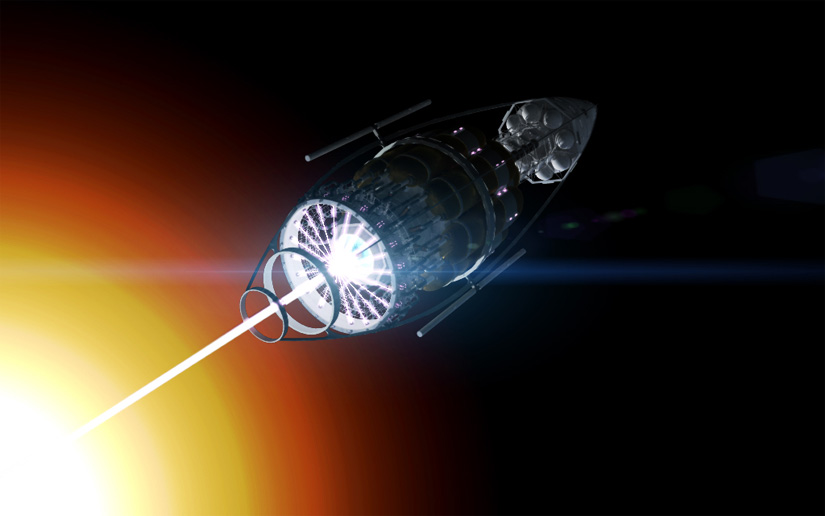06:43:51 pm 12/16/2024
Viewed: 10232
Forward Time Travel and Space Exploration: Unlocking the Future with Antimatter Propulsion and Space-Based Vacuum Systems
Introduction: The Vision for Time Travel and Advanced Energy Solutions
Time travel has fascinated humanity for centuries. While traveling to the past remains speculative, traveling forward in time is scientifically feasible, grounded in Einstein’s theory of relativity. The potential for forward time travel lies in harnessing immense energy to achieve near-light speeds, creating significant time dilation effects. Central to this vision is the use of antimatter propulsion systems—a revolutionary energy source that could unlock the future of space travel and beyond. Coupled with advanced space-based vacuum systems, these technologies could transform our approach to energy generation, transportation, and planetary sustainability.
---
Forward Time Travel with Antimatter Propulsion
The Science of Forward Time Travel
Einstein’s special theory of relativity demonstrates that as a spacecraft approaches the speed of light, time slows down for those aboard relative to observers on Earth. This phenomenon, known as time dilation, allows travelers to “leap” into the future. For instance, at speeds nearing 90% of the speed of light, time for the spacecraft’s crew would pass at half the rate of time on Earth. Greater speeds exponentially increase this effect, enabling substantial leaps into the distant future.
Antimatter as the Key to Propulsion
Propelling a spacecraft to relativistic speeds requires immense energy—far beyond the capabilities of chemical or nuclear propulsion systems. Antimatter, the most energy-dense substance known, provides a solution. When matter and antimatter annihilate, they release energy with 100% efficiency, making antimatter a highly potent fuel source.
- **Energy Potential**: 1 gram of antimatter produces the energy equivalent to 43 kilotons of TNT, capable of powering a spacecraft for extended periods.
Sustained Acceleration: In the vacuum of space, continuous propulsion enables uninterrupted acceleration, pushing a spacecraft closer to light speed over time.
By combining antimatter propulsion with gravitational slingshots around celestial bodies, a spacecraft could achieve even greater velocities, allowing travelers to experience a few months of travel while decades pass on Earth.
Space-Based Vacuum Systems: A Revolutionary Platform for Science and Energy
Cost Comparison: Earth-Based vs. Space-Based Vacuums
Achieving a near-perfect vacuum is essential for antimatter storage and advanced physics experiments. However, creating such vacuums on Earth is prohibitively expensive and inefficient compared to leveraging the natural vacuum of space.
Earth-Based Costs:
- Constructing a vacuum chamber (~1,500 cubic meters or larger) costs over $100 million, with millions more required annually for maintenance.
- Limitations such as outgassing and particle ingress degrade the vacuum over time, necessitating constant upkeep.
Space-Based Costs (LEO):
- Launching a vacuum box into low Earth orbit (LEO) costs $20–30 million using existing platforms like SpaceX’s Falcon 9.
- The natural vacuum of space eliminates the need for vacuum pumps, drastically reducing maintenance costs.
- Operational expenses, such as communications and robotic servicing, are minimal.
Longevity of Space-Based Vacuums
-Earth-Based Longevity: Even in a sealed chamber, outgassing degrades vacuum quality within weeks or months, requiring regular re-pumping.
Space-Based Longevity: In space, the vacuum is self-sustaining, with minimal risk of contamination. A well-sealed vacuum box could remain stable indefinitely, barring impacts from micro-meteoroids or debris.
#### **Benefits of Space-Based Vacuum Systems**
Cost Savings: Eliminates expenses associated with maintaining Earth-based systems, such as vacuum pumps and outgassing mitigation.
Improved Experimentation: Enables continuous research without interruptions for maintenance or degradation.
-Enhanced Capabilities:
- Microgravity allows experiments not possible on Earth.
- Robotic servicing extends operational lifespan and enables upgrades.
Pioneering a Sustainable Future
Energy Generation with Space-Based Systems
Space-based vacuum platforms could play a crucial role in advancing energy solutions, particularly by facilitating research into antimatter storage and energy transmission.
-Tesla’s Energy Transmission: Combining antimatter propulsion research with Nikola Tesla’s theories on wireless energy transmission could lead to orbiting power plants that beam electricity to Earth. These systems would:
- Eliminate the environmental impact of fossil fuels, solar panels, wind turbines, and hydropower plants.
- Provide global electricity access with zero pollution.
Transforming Transportation and Exploration
The research driven by antimatter propulsion and space-based vacuums could:
- Revolutionize interstellar and near-Earth travel, enabling faster, more efficient spacecraft.
- Pioneer new transportation methods on Earth, leveraging space-based technology for high-speed travel.
An Open Letter: Unlocking the Potential
To the leaders, visionaries, and innovators of our time:
The potential of antimatter propulsion and space-based vacuum systems is immense. By investing in these technologies, we could not only achieve forward time travel but also solve some of humanity’s most pressing energy challenges. Imagine a world powered by clean, limitless energy from orbiting power plants, free from the environmental costs of current energy systems. Imagine a future where space travel is accessible, efficient, and transformative, driving humanity into a new era of exploration.
This vision is within reach, but it requires bold action and collaboration. The groundwork is laid, and the possibilities are endless. Let us take this step forward together and pioneer a future where time travel, sustainable energy, and deep space exploration are realities. The time to act is now.
Conclusion: A Call to Action
Forward time travel, powered by antimatter propulsion, represents more than a scientific dream—it’s a gateway to humanity’s future. Coupled with space-based vacuum systems, this technology has the potential to revolutionize energy production, transportation, and exploration while preserving our planet’s environment.
The ideas discussed here could expedite space exploration, unlock sustainable energy solutions, and transform life on Earth. While these concepts may seem ambitious, they are grounded in real science and represent an achievable future. Let’s hope the right people see this vision and take the steps needed to make it a reality—for the betterment of all humankind.
No video exists.
Today: 634
Total: 998491
Last Hour: 0





Comments